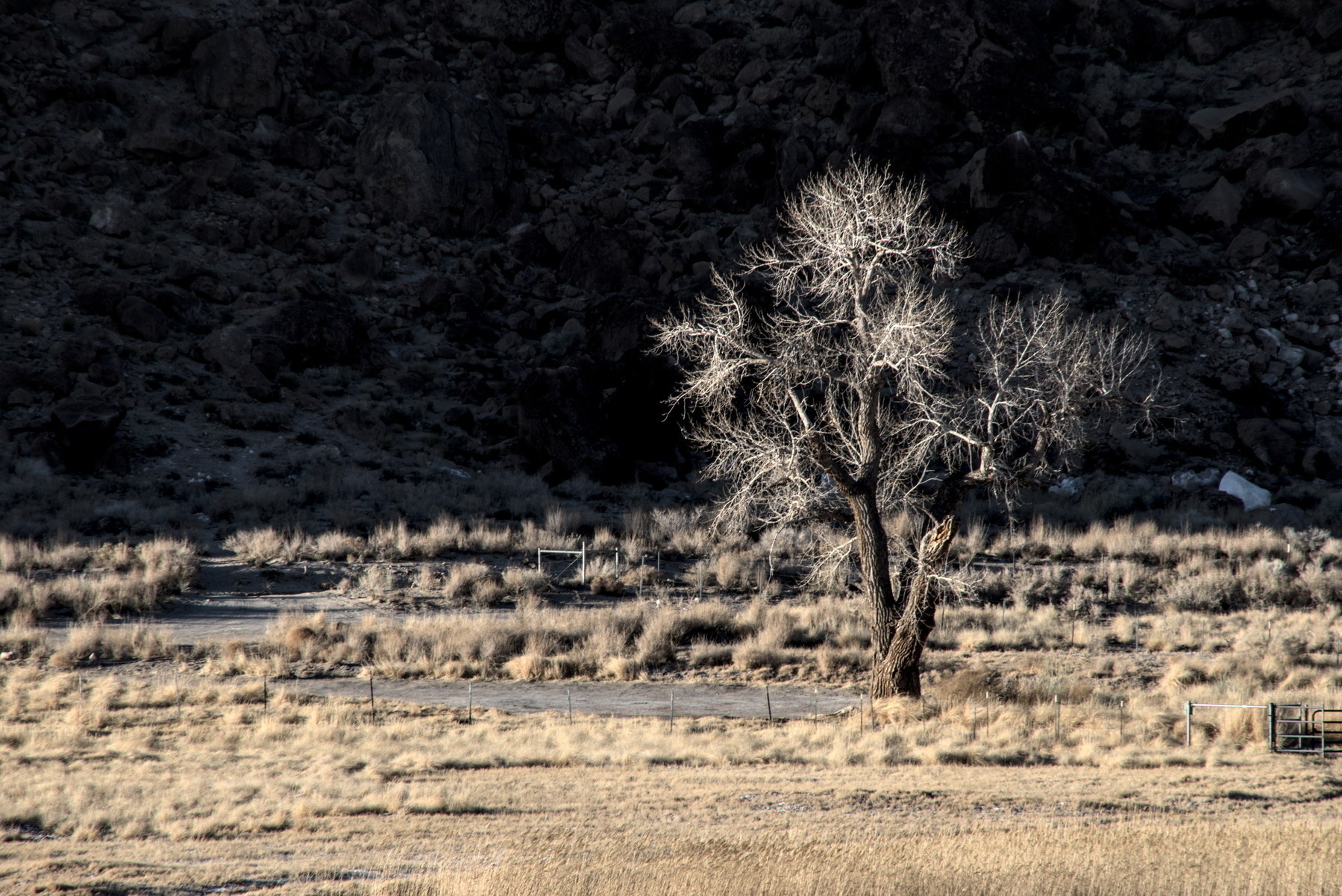Lone, Cottonwood
A lone Cottonwood tree in Round Valley.

Cottonwood trees grow in the high desert along the waterways. Large, asymmetrical, brittle, they seem to rush through life, neglecting to care for themselves properly. Presumably they are called Cottonwoods because of the white fluff they produce in the spring. But if you pick up a log of Cottonwood, it feels about half as dense as you would expect. almost comically light, so you’d think it is half cotton as well.
Without that density, the wood lacks strength. There are some lanes in the valley with Cottonwoods lining both sides. I’ve been advised not to take those routes during high winds, and indeed, if you drive them after a storm, you often find your way blocked. I know a pasture where the Cottonwood trees are massive, but mostly horizontal.
Curiously, Cottonwoods are not prized for firewood, though they look like hardwoods. That may be because the wood is light and burns too quickly, but the rounds are a nightmare to split. The grain spirals, like DNA. Lodgepole pine tends to have a straight grain, and it splits easily. The rounds grab the maul and wedge, holding them an inch deep, but also stop them dead. Lodgepole pine is the prized firewood, and we rarely see it lying on the ground for long, but Cottonwoods go uncollected for years.
Cottonwoods lose their leaves in fall, but they start new foliage soon after, just stubby buds waiting for spring, so the trees look fuzzy in winter. When backlit, this makes the trees glow, even when they look bare. When the late afternoon light puts the big granite wall in shadow, the trees still in the light create a view with amazing contrast. That’s when the valley seems at its best.